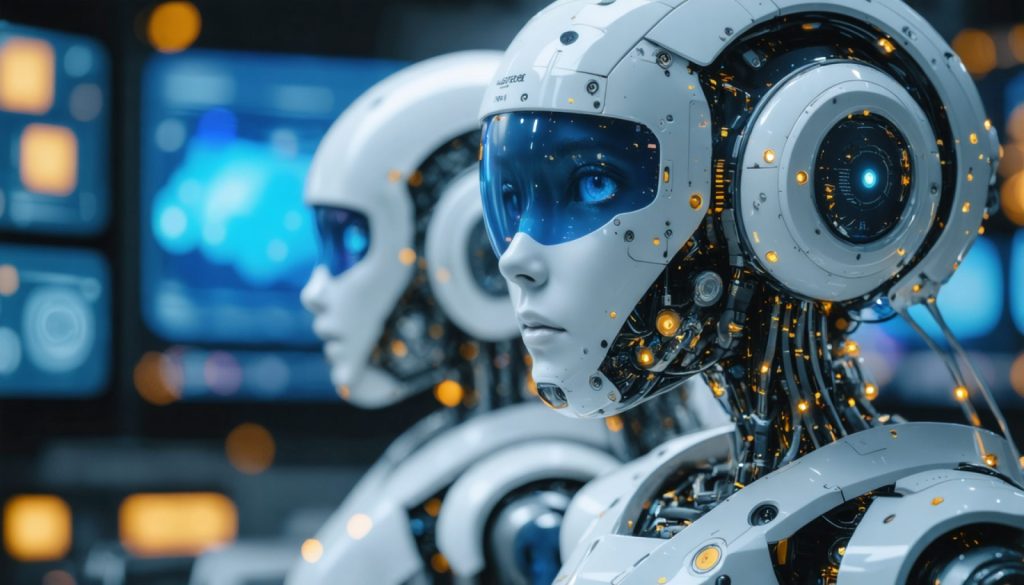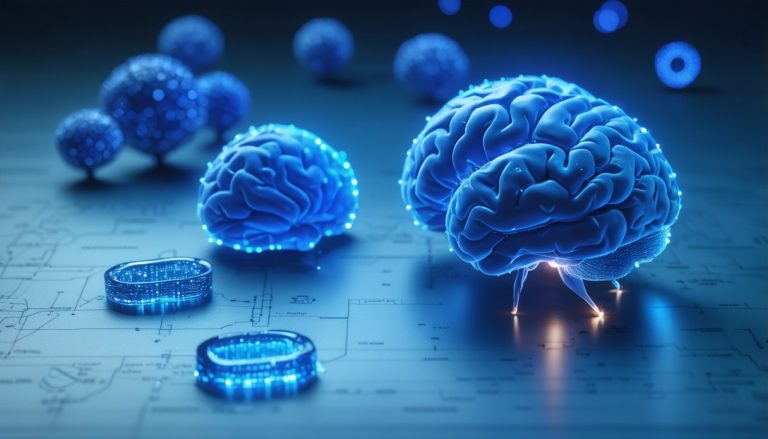
- AI is transforming education, enhancing classrooms, and empowering educators with personalized learning tools.
- The ASU+GSV Summit in San Diego highlights AI’s rapid integration into education and its future potential.
- The focus is on becoming AI-literate, with AI tools designed to support, not replace, teachers.
- Linda Vista Innovation Center exemplifies AI integration, enabling students to actively engage with AI technologies.
- Challenges include equitable access, data privacy, and adequate teacher training, requiring careful balance.
- AI enhances critical thinking and collaboration, creating tailored learning experiences and emphasizing human skills.
- The future of education lies in AI complementing human teaching, promoting limitless learning and abundant opportunities.
- AI is a tool for educators to harness, complementing traditional teaching while fostering innovation.
Artificial Intelligence, once a storyline of science fiction, now penetrates the heart of our educational systems—revolutionizing classrooms, empowering educators, and molding the workforce of tomorrow. As school bells ring across the nation, AI whispers possibilities for a brighter, more efficient future in education.
Imagine a bustling convention hall in San Diego, the ASU+GSV Summit, where educators, tech innovators, and global leaders converge. It’s fondly called “the Davos of education.” Their gathering is not merely to forecast trends but to witness firsthand the seismic shift AI is inciting in both the personal and professional spheres of learning. This year’s theme, “Learning at the Speed of Light,” doesn’t just hint at the rapid pace of technological advancement; it reveals a commitment to harnessing its potential.
At the hub of this transformation is the pivotal question posed by educators to AI’s enthusiasts and skeptics alike: What does it mean to be AI-literate in a world increasingly led by algorithms? The answer shapes the work of Dr. Francisco Escobedo, a visionary in AI-integrated education, who champions the development of AI models tailored for teachers that promise a personalized learning revolution. These models are designed not to replace educators but to enrich them, offering real-time insights and creating room for more meaningful teacher-student interactions.
Across the landscape of innovation, the Linda Vista Innovation Center stands as a beacon for integrating AI with tradition. Within its walls, students aren’t merely passive recipients in this shift—they become active participants, dabbling with AI tools that echo real-world applications. They experiment in environments mimicking future workplaces, blending cutting-edge technologies with hands-on learning.
Yet, as schools embrace these advances, they confront persistent barriers: ensuring equitable access, safeguarding data privacy, and providing adequate teacher training. Here lies the paradox of AI in education—a powerful tool that requires a delicate balance. Without robust infrastructures and thoughtful guidelines, the divide between well-resourced and underserved communities may only widen.
Dr. Escobedo warns that the allure of AI isn’t in its novelty but in its ability to enhance what educators excel at naturally—fostering critical thinking and collaboration. Through AI-enhanced content creation, adaptive assessments, and intelligent tutoring systems, educators can tailor learning experiences that cater to diverse student needs while focusing on human skills crucial in a complex global market.
Moving forward demands more than adopting technology for technology’s sake. It calls for a reimagined education system where AI complements the human touch in teaching. In this, lies AI’s real promise: a supportive role that lightens the load while lifting the potential of both teachers and students towards a future where learning is limitless and opportunities abound.
As the clicks of keyboards echo through classrooms and conference rooms alike, remember the core of this revolution—AI is a tool for us to wield, not be wielded by. It’s a shimmering glimpse of the future today, awaiting only the right steps to unlock its vast potentials.
AI in Education: Unleashing New Frontiers with Intelligent Learning Tools
Understanding AI’s Role in Education
Artificial Intelligence (AI) is no longer just a concept from science fiction; it is actively reshaping the educational landscape. At the core of this transformation is the integration of AI tools that enhance personalized learning, allowing for greater customization to meet diverse student needs.
How AI Enhancements Are Revolutionizing Classrooms
1. Personalized Learning: AI algorithms can analyze individual student performance to provide tailored educational experiences. This involves real-time feedback and adaptive learning systems that adjust content to match students’ pace and comprehension levels.
2. Empowering Educators: AI serves as an educational support system rather than a replacement. Tools like intelligent tutoring systems provide educators with insights into student progress, helping them to better address individual challenges and opportunities for growth.
3. Active Student Participation: At facilities like the Linda Vista Innovation Center, students are engaged with AI tools that prepare them for future workplaces. This approach integrates technology seamlessly into the curriculum, making students active problem solvers.
4. Transformative Assessments: AI can revolutionize assessments by offering adaptive testing methods that not only evaluate knowledge but also focus on critical thinking skills and creativity.
Real-World Use Cases
– AI-Driven Administrative Tools: Schools utilize AI to streamline administrative tasks, allowing educators to dedicate more time to student interaction and curriculum development.
– Language Processing Tools: AI supports language learning through interactive applications that provide immediate feedback, enhancing students’ fluency and comprehension.
– Safety and Security: AI-powered surveillance systems in schools help ensure student safety, monitoring premises to quickly alert authorities of potential threats while maintaining student privacy.
Industry Trends and Market Forecasts
According to a report by MarketsandMarkets, the AI in education market is expected to grow from USD 1.1 billion in 2019 to USD 3.7 billion by 2024, at a compound annual growth rate (CAGR) of 26.3%. This growth underscores the rapid adoption of AI technologies in educational settings.
Challenges and Considerations
– Equitable Access: There’s a need to ensure all students, regardless of background, have access to the benefits of AI-enhanced education.
– Data Privacy: Safeguarding student data is crucial. Establishing clear guidelines on data use and privacy is essential for maintaining trust in AI systems in education.
– Teacher Training: For AI tools to be effective, educators require comprehensive training to integrate these technologies into their teaching methods seamlessly.
Recommendations for Educators
– Engage in Continuous Learning: Educators should stay informed about new AI tools and methodologies through professional development and peer exchanges.
– Pilot AI Programs: Start with small-scale implementations of AI to evaluate their impact before full-scale integration.
– Emphasize Critical Thinking: Use AI as a tool to foster critical thinking and creativity rather than just an endpoint for knowledge retrieval.
Conclusion: The Future of AI in Education
AI holds the promise of enhancing educational environments by supporting, not replacing, the role of teachers. The key is to balance technology with human interaction, ensuring that the learning experience remains rich and interactive.
For more on technological advancements in education, visit the Education.com.



